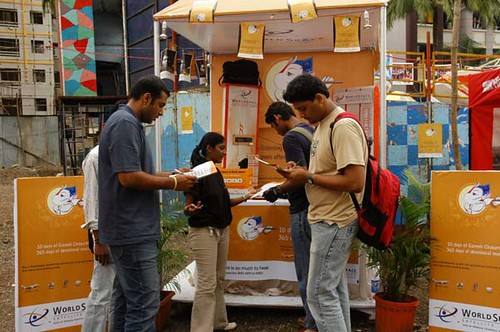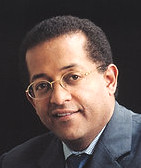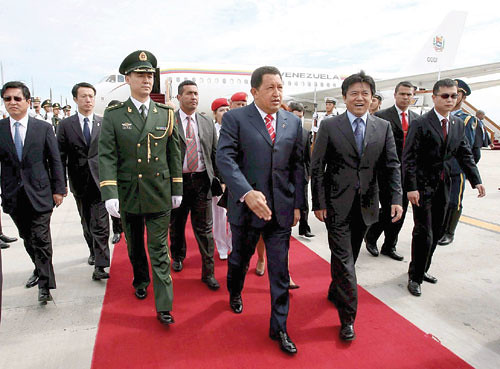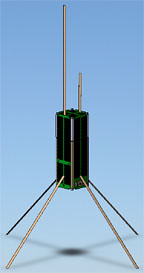The company, which broadcasts its satellite radio services to more than 170,000 paid subscribers in 10 countries throughout Europe, Africa and Asia, sought Chapter 11 protection in the U.S Bankruptcy Court in Wilmington, Del. It listed assets of $307.4 million and liabilities of $2.12 billion.
The bulk of that debt, some $1.8 billion, is a contingent obligation under a royalty deal if the company’s pretax earnings reach a certain level, according to company spokeswoman Judith Pryor.
In court papers, Chief Executive Noah A. Samara said the company was forced to file for bankruptcy after seeking four forbearance agreements with its noteholders since June.
In addition, WorldSpace has failed to pay some of its workers for two months, causing "significant employee attrition," Mr. Samara said. The company owes 50 "critical employees" $1.35 million in back pay.
"As a result of WorldSpace’s growing concern regarding its inability to make timely payments to critical employees and other essential creditors, WorldSpace determined that it is in its best interests and the best interests of its subsidiaries and stakeholders to file these chapter 11 proceedings," said Mr. Samara, one of the key figures in the early stages of XM Satellite Radio Holdings Inc.
The company, which intends to sell off its assets or recapitalize the business, is seeking court approval of a $13 million bankruptcy loan provided by a group of hedge funds to continue operating while under bankruptcy-court protection.
Worldspace was founded in 1990 with the intent to provide satellite radio services to the emerging markets of Asia and Africa. The company has two satellites currently in orbit and a third in storage.
Among the WorldSpace’s so called first-day motions the company is asking to secure the bankruptcy loan and use some of that funding to pay its employees. The company is also seeking the continued use of its bank accounts.
Without the bankruptcy financing, the remaining critical employees will likely depart, which would "impair" WorldSpace’s ability to operate the satellites and continue as a going concern, Samara said.
Yenura Pte. Ltd., a Singapore-based company controlled by Mr. Samara, is WorldSpace’s largest unsecured creditor, owed $55.2 million. Number 2 is Micronas GmbH, owed $18.2 million, and Fraunhofer Institute for Integrated Circuits, owed $4.4 million.
Mr. Samara is the largest shareholder of the Silver Spring, Md. company, owning 47.15% of the firm. Aletheia Research & Management Inc., owning 37% percent, and Natixis Asset Management Advisor LP, owning 5.25%, are the other major shareholders of WorldSpace.
170,000 subscribers? And they’ve paid to build and launch two satellites? AfriStar launch in 1998, so I’m wondering how they could have kept going for the last ten years on so few paying subscribers. Probably the dedication of Noah Samara, their CEO and founder. His speech before the African Development Forum in 1999 tells you something about what moved him (it’s so good I need to present it all):
The urgent imperative of our time and of this continent is the creation of an affluent African Information Society. I will speak to this need today. And I will be brief.
Over the past 15 years, we have seen the industrialized world shift its focus from connecting people to connecting nodes of information which people can universally access, share and grow. Focus on convergence technologies has brought unprecedented benefit and wealth resulting from net media or, if you will, information affluence.
In contrast, the developing world has focused on teledensity and lines per 1000 in its quest for universal access. The focus has been universal access to telephony and not to the electronic consciousness of mankind, more popularly known as the Internet. Accordingly, the progress in teledensity has not yielded the corresponding benefits and wealth which information affluence has created for the industrialized world.
Indeed, the information gap between nations is going through a quantum leap. It is volatile and threatens to explode into an irreparable gulf between rich and poor nations.
Developing efficient and effective ways to create information-affluent societies is the need for every need. I have pursued this vision with a sense of purpose and urgency; it animates my being and instructs my energies. Information affluence is, in my humble opinion, the sine-qua-non to development. Have it and wealth and development will follow. Without it, our attempt to alleviate poverty, bring health, wealth and education – indeed our attempt to create a sustainable, compassionate, civilization will be without success.
Information is the predicate to everything we know. It is ubiquitous. It is the building block behind the human DNA, the chair you are sitting on, the building you are in, the car you drive.
Look behind the wealth of nations and of individuals and — again — you will find information. Information about processes, techniques and organizations.
Look behind the poverty of individuals and nations and you will find ignorance.
The state of global information is the best allegory for the state of our planet. The gap between poor and rich has been made starker, not better, by the power of information and communications technologies.
While these technologies have liberated lives, created stock market miracles and improved economies, they have only touched a fraction of the world’s population.
An abyss is in the process of formation.
Nearly 2.5 billion people have never made a phone call; yet Manhattan alone has more phones than all those combined in sub-Saharan Africa. While there is a radio station for every thirty thousand people in most OECD countries, on average there is one radio station for every two million people in most of the developing world. There are more Internet hosts in Estonia than all of sub-Saharan Africa. The hardware disparity between poor and rich nations is not nearly as troubling as the scarcity of information which directly undermines the ability of a nation to not only keep its citizens informed and educated, but to simply keep them alive. 11 million people will die of AIDS this year in Sub-Saharan Africa. 40 million children will be orphaned. Either one of those numbers, by any definition, represents the population of an entire country. This is horror we do not really comprehend.
Asked about concerns he might have at the loss of thousands of citizens, Stalin is said to have once remarked that a single death is a tragedy; but a million a mere statistic.
Stalin was a bad man. We all agree he was ruthless, unmoved by human suffering. But does his comment reflect on him or is his an insight about all of us?
Consider the story of Yaguine Koita and Fode Tounkara – two boys from Guinea, ages 14 and 15. Eight weeks ago they tried to escape the turmoil and poverty of their homeland by sneaking on board the landing gear of a Sabena airliner. They died somewhere between Conakry and Brussels in the unpressurized compartment where the temperature at that altitude is 55 degrees below zero.
A letter they were carrying in their clothing read:
"Help us. We suffer a lot in Africa. We have no rights as children. We have no food. We have war and illness. We have schools but lack education. We want to study so we can be like you, in Africa. "
Their story was carried in every newspaper throughout Europe. It even made the Washington Post where I read about it.
A single death is a tragedy. Eleven million people will die this year from AIDS alone in Africa. How many thousand people do you think died in the few minutes I’ve been standing before you? Does it matter? It is after all a statistic!
But Yaguine and Fode’s death – that is eloquent. To me it is more than poignant.
You see, I was born in Africa and left when I was 17, like Yaguine and Fode, in search of education. I did so weeks before a revolution, a period of terror, in Ethiopia killed many of my close friends.
But for the Grace of God, I could have gone the way of my friends.
Instead, I stand before this august assembly of distinction and achievement to speak on the urgency of creating information affluence for the dispossessed. What can I tell you that the death of Yaguine and Fode has not already conveyed? This is an imperative we must address. It is the same imperative that led me to founding WorldSpace fewer than 10 years ago.
The vision of founding WorldSpace was partly driven by a desire to stem the spread of AIDS in Africa. I felt that an efficient, cost effective system could be developed to deliver a variety of information across a whole continent, clearly and consistently. After sketching this idea, literally, on the back of a napkin, I went to my wife to tell her I was quitting my job as an up and coming legal and business advisor in the communications and satellite industry. "Right, Like hell you will" she said.
I said, no, no, no, no; this is important. I want to launch a satellite over Africa," I told her. She obviously thought I was crazy.
So in the hope of getting her consent, I told her this would be a piece of cake — easy and straightforward. You see all you have to do is:
- Start a company
- Apply for licenses
- Raise capital
- Get 130 countries to allocate frequencies
- Get great engineers to design the system
- Get great companies to build/launch the system
- Get more companies to make/distribute millions of receivers
Needless to say, it took longer than I thought and it cost more than I thought. But we did start the company; got licenses; got 130 countries to allocate the choicest part of the radio spectrum globally for the service; and raised the money needed to build and launch the system. Starting this month, world brand manufacturers are distributing the receivers throughout Africa.
This is the first satellite ever launched specifically to cover Africa — something I am particularly proud of. The service is also the first of its kind and is being introduced in Africa two years before it gets to America.
The second satellite will be launched in a few months over Asia; soon after a third will cover Latin America in the largest footprint for a direct broadcast service ever created by a single company.
Simply stated, these satellites will broadcast 60 plus channels or radio stations directly to a new generation of receivers. No satellite dish is necessary; just a simple antenna on the receiver.
The receivers can also be connected to a computer to deliver a full-blown, internet-like multimedia content. This is important because the growth of internet-capable PC’s in the developing world is outstripping the capacity of the telephone infrastructure. The WorldSpace system can deliver gigabytes of information to computers without the need of a phone, direct via the receiver.
The service will carry music, information and entertainment. And we are dedicating capacity to carry content addressing women’s issues, environmental initiatives, health advisories and distance education. The system’s data delivery capability can be used to :
- broadcast the entire school curriculum of a whole nation or an entire continent;
- reach health professionals on a regular basis with information on pandemics, epidemics and share experiences of successes and failures;
- telecommute agriculture extension programs;
- reach women with solutions that address their needs in family planing or entrepreneurial training;
- reach societies at large to think creatively about their environment and its input on the delicate balance of our planet; and
- help the youth to reach their counterparts with initiatives, with their dreams.
We believe information is the key to change stark realities that are facing the peoples of the developing world.
WorldSpace is a business with a mission: namely, to create an infrastructure that will provide hundreds of millions of people with access to information. WorldSpace realizes there are 20 million households across Africa that are able to afford and utilize its system for a fee here and a fee there that soon adds up to real money.
But we cannot and will not be oblivious to the fact that more than 350 million people on this continent will not be able to access any information unless we do something about it.
At the end of the day, life is somewhat digital. You have either done something, or you have not. The word trying is a euphemism. In the harsh reality of existence the gray dissipates into a stark relief of black and white. I will not belabor the struggle, the lonliness, the humiliation and the failures we faced at WorldSpace throughout this decade-long journey.
But I can unequivocally tell you that I never doubted – even for an instant – that Africa had to have, indeed deserved, an infrastructure specifically tailored to meet its needs.
In the Book of Ecclesiastes it is written that "The race is not to the swift, nor the battle to the strong, neither yet bread to the wise, nor yet riches to men of understanding." In the end life and what we make of it comes down to human will.
It is in our power to bring information affluence to Africa. It is in our hands to make it happen.
Consider the following proposal: Every constituency in this august hall decides to work on a single initiative and this is the initiative: We put 5 million internet terminals in 5 million villages and neighborhoods in 5 fast-paced years. These terminals will have the capacity to deliver primary-to-college education; teach women to become bread-winners for their homes; teach health professionals how to address the pressing health needs in their areas. Maybe the system might even engender understanding between the variagated peoples of this, our beloved continent. It can be done if we want it so badly that we decide to work tenaciously and with a singularity of purpose.
We are doing just that at WorldSpace. We have embarked on a study with the Ethiopian Media Agency to put receivers in every school and attach these receivers to computers and printers. In addition to delivering the curriculum for each school, the units would address the needs of the other constituencies attached to the schools: like women, health professionals, farmers etc…. Each such unit may thus touch the lives of over 200 people — improving their physical well-being, their mental capabilities and their spiritual lives. We are interested in carrying this initiative to other countries in Africa. I once read that Mother Teresa said, "God doesn’t require us to succeed; He only requires that we try." You know she is right. Because in his boundless mercy, the God of big and small things sees into our hearts and souls and judges us by our intent as well as our actions.
History, by contrast, has no compassion whatsoever. Our attempts, and our intent mean nothing to history. Our well-intentioned efforts will not even earn us a footnote.
I am here to speak for industry at this august opening ceremony. Instead, permit me to speak to industry, to governments and to civil society. My message is simple: creating social and economic development in Africa is not about me and it’s not about you. It’s about getting it done. The Prime Minister hit it on the nail at our opening ceremony: by providing for the future of the dispossessed, we will secure our own and that of our families.
Our technology is digital and so is our task. It’s zero or one; we are either on or off; we have gotten it done or we have not.
Here’s what we might see if we get it done, however. Yaguine and Fode’s death will not happen in the next millennium. They would not have to leave their home in search of education. They would find it in the comfort of their village or their homes.
Why can’t we all come together on an initiative that would put us much closer in saying Yaguine and Fode will not die in the next millennium?
We should agree to act, believing that we have a lot more power to effect change, both individually and collectively. I for one have learned never to underestimate where a napkin, a handful of people and commitment can take you.
The great anthropologist Margaret Mead once said: Never doubt that a small group of thoughtful, committed people can change the world. Indeed, she says, "It is the only thing that ever has."
Rainer Maria Rilke said it differently, beautifully:
Again and again in history some special people wake up
They have no ground in the crowd
They move to broader laws
They carry strange customs with them, demand room
for bold and audacious actions
The future speaks ruthlessly through them
They change the world!
Change, commitment, resolve all center around the courage that affirms our lives or ideas in spite of all that threatens our lives or ideas! True courage or conviction is neither an opinion nor deterred by one. Rather it is a state of being.
I have no fear to stand alone in my conviction that change towards a compassionate sustainable civilization is not only possible, but inevitable. But I know there is a group of us out there and in this room that are rooted in the conviction that the shortest road to our goal is the creation of an information-affluent African society. Together we will honor our ancestors by creating the greatest of patrimony for our progeny.
The question for you, your excellencies, ladies and gentlemen, is not whether the inevitable will happen; but whether your fingerprint will be among that small group of thoughtful, committed people who actually changed the world.
Just as moving today as it was nearly a decade ago. Let’s hope there’s some way this company can right itself and continue on with its noble mission. Maybe they’ll get some help from O3b Networks.













